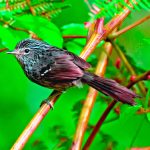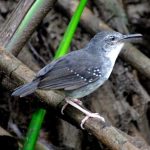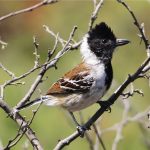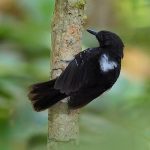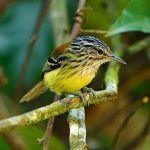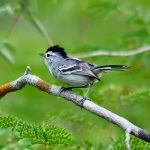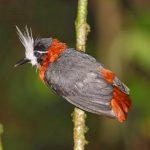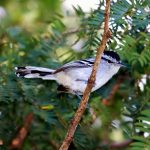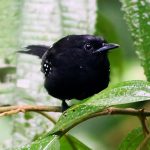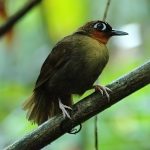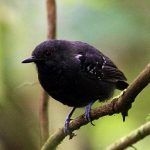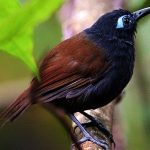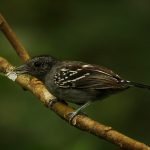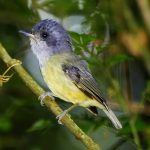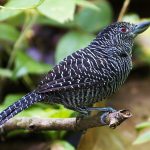Black-hooded antshrike

Thamnophilus bridgesi
 |
| Photo by Norbert Sauberer (Internet Bird Collection) |
Common name:
black-hooded antshrike (en); choca-de-capuz (pt); batara capucin (fr); batará negruzco (es); kapuzenameisenwürger (de)
Taxonomy:
Order Passeriformes
Family Thamnophilidae
Range:
This species is only found in the southern Pacific lowlands and foothills of Costa Rica and western Panama.
Size:
These birds are 14-16 cm long and weigh 22-24 g.
Habitat:
These birds are mostly found along the edges of rainforests, in mangroves and second growth forests.
Diet:
Black-hooded antshrikes glean insects and spider from leaves.
Breeding:
They mostly breed in April-July. They nest on a deep, thin-walled cup, suspended from the surrounding vegetation, where the female lays 2 eggs. The eggs are incubated by both parents for 14-16 days and the chicks fledge 9-11 days after hatching.
Conservation:
IUCN status – LC (Least Concern)
Although the black-hooded antshrike has a restricted breeding range, it is described as fairly common. This population is suspected to be in decline owing to ongoing habitat destruction, but it is not considered threatened at present.
